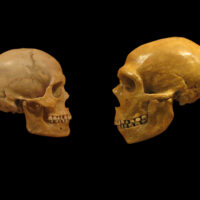It feels like there is hardly an Anthroposophical institution where they are not installed. They also hang above my desk in the Goetheanum: the Dörfler lamps.
A trip is taken to Breitenbach in the Swiss canton of Solothurn to learn more about them. Astralux’s premises are located in an industrial area – in the immediate vicinity, there is a fabric belt factory. On the same site, a company for plastic composites ‹brac› stands out with its functional building envelope. Since May 2022, the Bakelite Museum has been housed in an old building on the site showcasing household products and technology from the early days of plastic.
From Arto- to Astralux
Dragan Senfner warmly welcomes us – me, my colleague Louis Defèche, and our photographer, Xue Li. An encounter with the now 84-year-old founders led Dragan to the decision to continue to make the Dörfler lamps available. At the beginning of the year, the Eurythmist transferred the stock of the Artolux company to the Astralux company founded for this purpose.
We climb two floors of a narrow, bright staircase. The building has seen better days. But behind the door to Astralux, the atmosphere changes abruptly. Immediately, one experiences freshness and order. On the ceiling above hang dozens of pendant lights, quite close to one another, no two alike. It smells of solvents – unexpectedly: Since when do lamps smell?
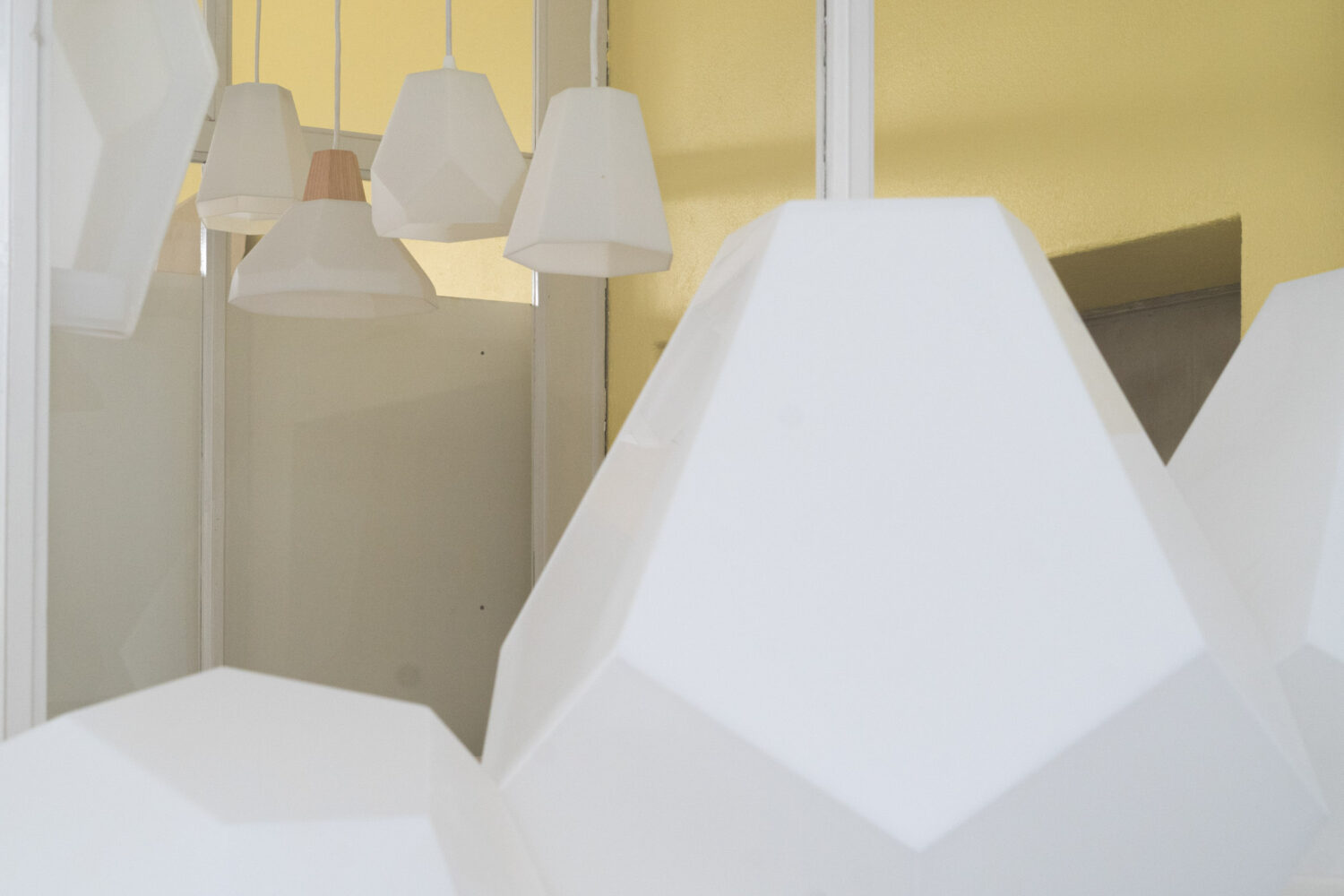
The managing director leads us into an office on the right. Wall lamps are exhibited on the wall next to and above the door, no less dense than in the hallway, both in the well-known angular, crystalline shapes as well as in the round, floral shapes I hadn’t yet seen. In a few square meters, the variety of shapes of the Dörfler lamps is evident.
Their pendant and ceiling lamps, as well as the wall, table, and floor lamps, are known to many. They have been produced since 1997 in Breitenbach under the name Artolux, by Ursula and Rudolf Dörfler. For 64 years they have worked on developing the lamps, remaining open to innovation. For example, when halogen lamps became fashionable, they adapted their lamps where necessary. Halogen lamps need a transformer, which influences the design, and they were adapted accordingly. Now that LED technology is proving to be the standard, lamps can also be equipped with them.
Shape Retention
After this welcome, we go into the first production hall: On the left, from floor to ceiling, are countless drawers with the small materials required for production, from screws to wires to sockets. On the wall directly opposite is an industrial elevator. A few steps later on the left are placed hard-fiber and acrylic glass plates. Tilo Emanuel Nissen, Dragan Senfner’s business partner, shows the tints of the acrylic glass sheets: white, opal (milky), and transparent. Transparent? In the future, I will pay attention to where I come across this plate variant.

On the right are several machines for cutting plates and milling the openings between the wall or ceiling and the lamps’ sockets. Plates are joined together to form lampshades in the assembly room. But how can several platelets, and these in polyhedral spatial forms, be held together until they are glued? The plates are provisionally glued together with the help of tape. Pre-produced angles on the connection sides help to ensure that the platelets are positioned correctly. But this will not succeed without skill. This is where Dragan Senfner lends his colleague a hand – in addition to helping with management, assembly is one of his areas of responsibility.
The finished lampshade goes back to the first hall. At the first entrance, I had overlooked the area to left because of the abundance of drawers, but here is access to the fourth functional area: the painting chamber. Here, the plates are given a matte surface so that they do not reflect light. The technical term for this is a bit nobler: they are satin-finished. So this is where the smell of the solvents came from!
The Miracle of Form

So far, so good – it’s like tinkering with paper: you have to cut and glue the material. Only more complex, as the precisely fitting angles on the sides of the platelets show.
But wait, what about the round, floral shapes, for example? These cannot be formed from any cropped angular plates! Here the secret lies – or better, stands in another building.
We take the industrial elevator leisurely to the ground floor and go right towards an outhouse with a large stove. It has several chambers. With their high doors, they remind me of narrow lockers. Behind them, individual acrylic glass sheets are heated to about 180 degrees Celcius and then further processed on the neighboring machine.
Depending on the lamp shape, two processes are used: In one, a heated plate is blown from below with compressed air into a negative mold. The air pressure of about 10 bar comes from a compressor in the basement and is maintained until the acrylic glass plate has cooled off. The individual sides of the shape now appear seamlessly. In another process, the heated plate is inflated from below with high air pressure to be a kind of balloon, which after a timely shutdown of the air pressure, lays over a ramp-up mold stamp and takes on the glowing shape when cooling. This is another reason why seamless lamps are formed.
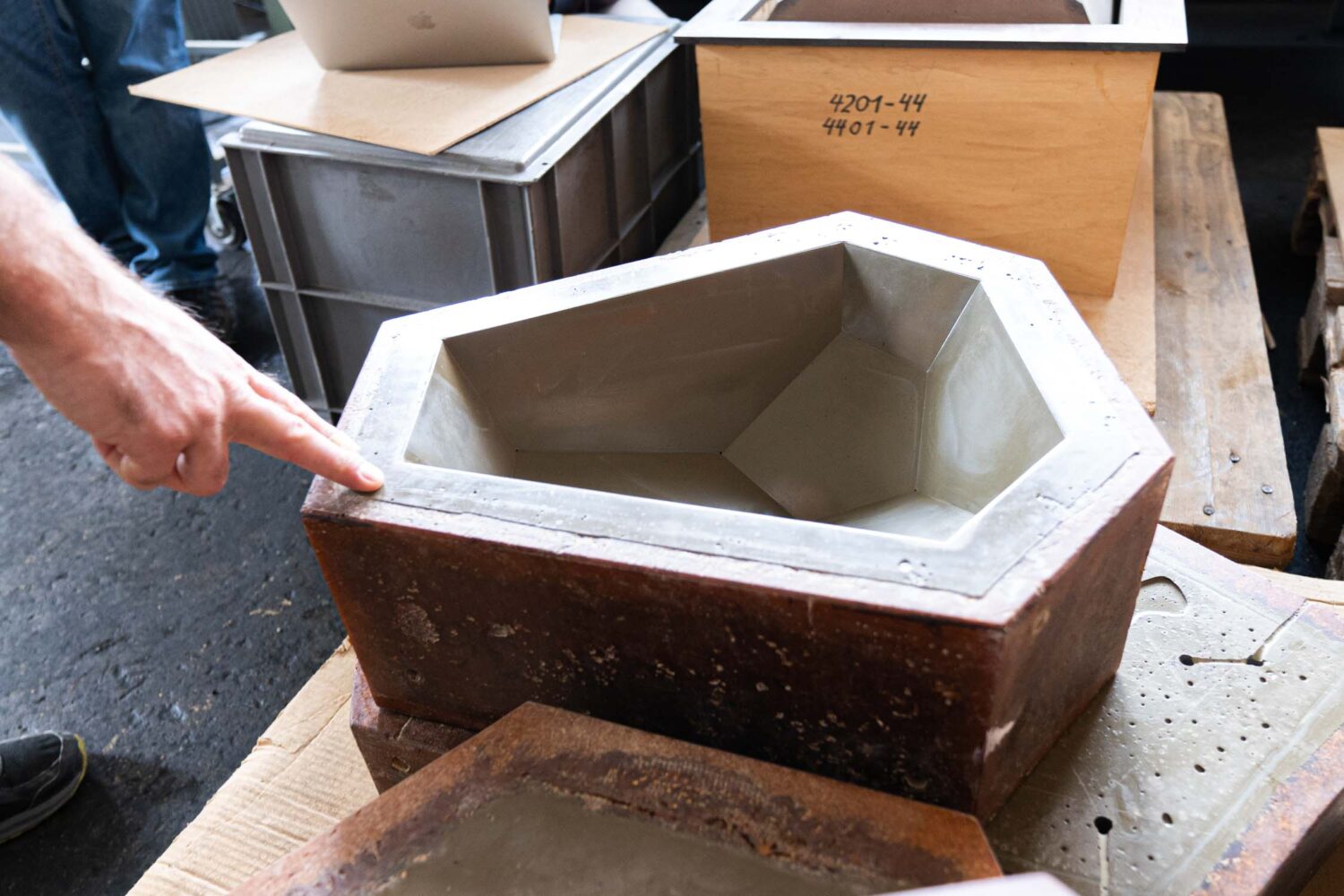
Developments Right Down to Production Machines
From room to room and from production step to production step, it becomes clear how much each lamp is the result of a complex sequence of manual work. Tilo Emanuel Nissen, himself a carpenter, mechanical engineer, and Eurythmist, points out the skill of Rudolf Dörfler in mechanical engineering. One of the milling machines they use is entirely self-made, and the machine for processing the hot acrylic glass plates is a product specified according to his wishes.
His preoccupation with platonic bodies and an encounter with the architect Rex Raab led to the further study of spatial forms. In 1958, Rudolf Dörfler and his wife, the Eurythmist Ursula, began producing lamps. Today, these can be found worldwide in Anthroposophical institutions as well as in parish halls and office spaces. Most customers are European, but worldwide shipments are part of the daily business. A few days before the visit, a shipment to Iceland took place, and another to Israel was imminent.
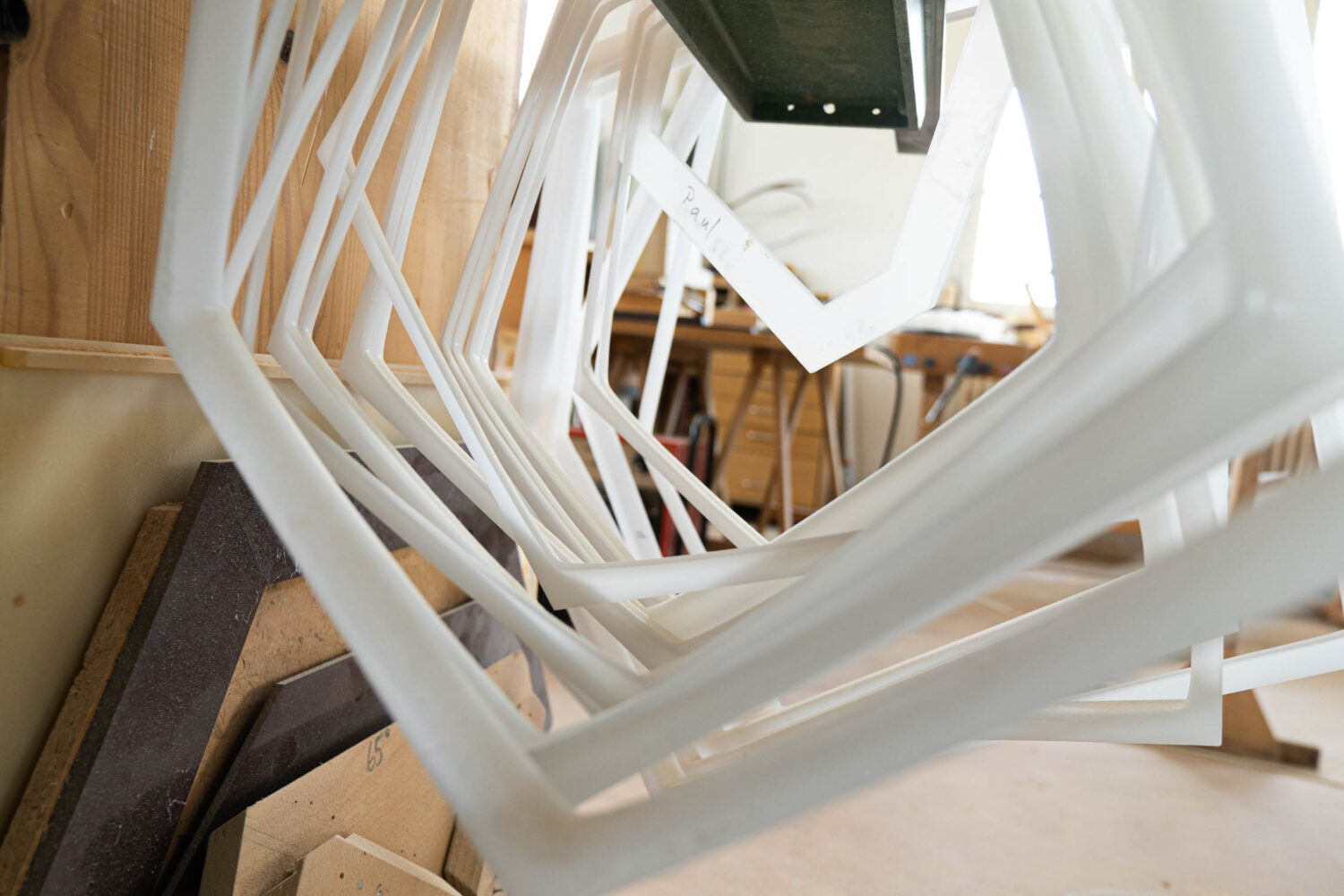
Even today, the productivity of the two villagers can be seen in the warehouse. They have not only produced supplies for current orders but also have numerous lamps ‹in stock› – a treasure that following customers can fall back on. In addition, the work of interior designers is characterized by custom-made products. To suit and illuminate architectural spaces well – especially if they have individual shapes and different framework conditions from building to building – tailor-made products are required. It’s good if you are familiar with spatial geometry, be it in platonic or Eurythmic forms.
Material
The tour of the workshops comes to a close – we sit back in the office for a review. My image of ‹the› typical Dörfler lamp has widened, primarily due to the variety of shapes and sizes. I also learned that lamps can be repaired while in operation. This makes them sustainable.
But what about the primary material used, the plastic acrylic glass? Why plastic of all things, in an Anthroposophical company from which naturalness and sustainability are expected? Many of the Anthroposophically inspired buildings were built with concrete because it can be shaped almost arbitrarily. Acrylic glass can also be shaped arbitrarily and productively, as long as you master the material properties well.
Tilo Emanuel Nissen: «Rudolf Dörfler often mentioned as an orally transmitted quote from Rudolf Steiner that an artificial wood was needed for the design.»
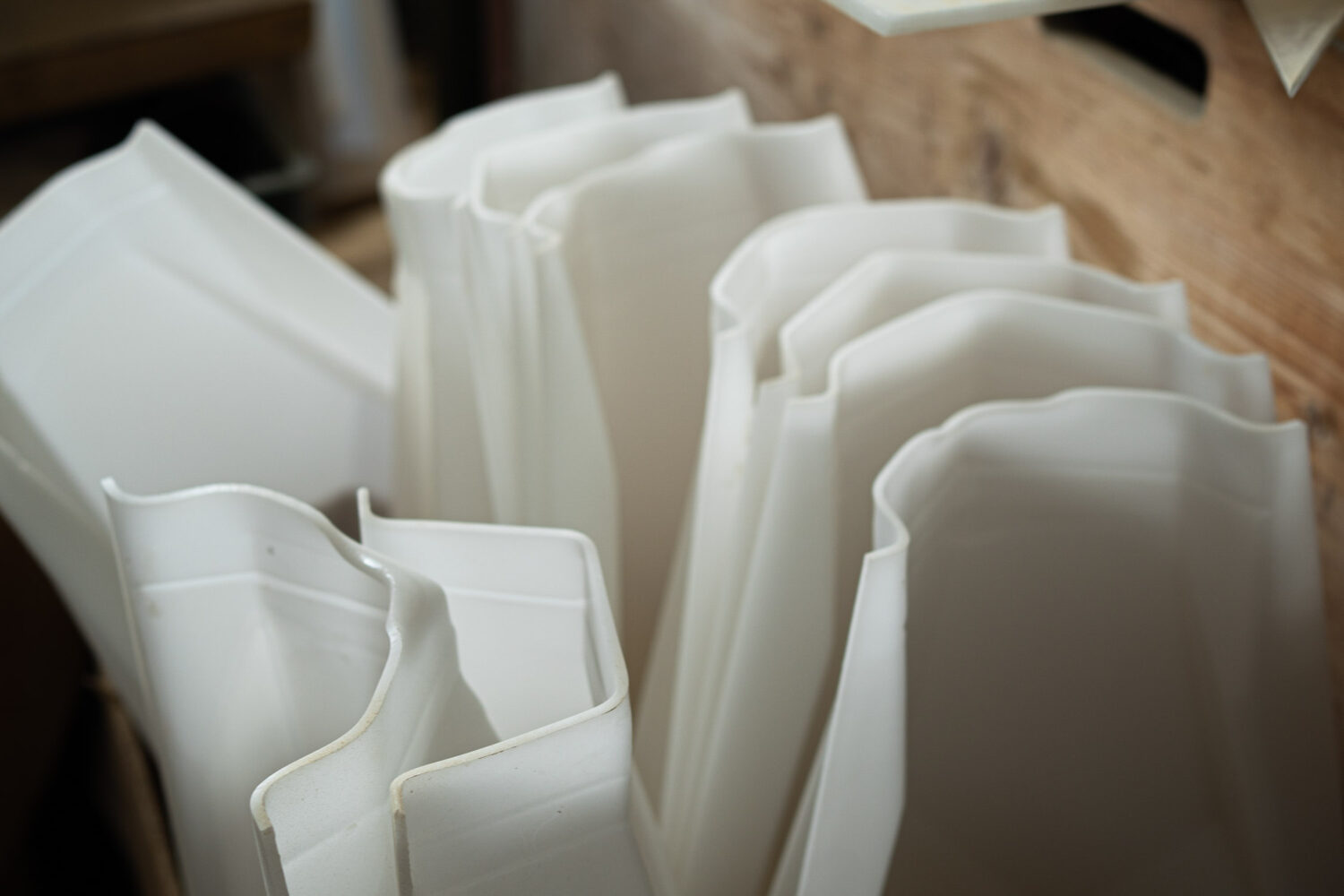
Dragan Senfner: «We live in a largely straightened world. Acrylic glass makes it possible to create living shapes. This is important because the shapes that surround us affect us.»
«Shapes are always a source of inspiration, have an effect on the ethereal, ideally stimulating it to move,» continues Tilo Emanuel Nissen. «Living forms are food for the soul.»
Light
There’s one thing we haven’t talked about yet: light. It is invisible – colors only become visible through ‹resistance›, for example, indirectly when casting shadows or in what Johann Wolfgang Goethe calls cloudiness: If there is cloudiness in front of something bright, yellow and red arises – as in the sunset, because behind the atmosphere, the turbidity, is the shining sun; if brightness is before the eclipse, blue is created – as in the sky when the brightly lit atmosphere lies in front of the dark universe.
Nevertheless, we speak of sunlight and associate it with heat. Both are existential for many living beings. Rudolf Steiner once pointed out that heat compression produces light (March 16, 1908, ga 102, 2016, p. 86); a light that appears cold is unpleasant to many. A component in the production process of acrylic glass is petroleum; this is created from plant substances by heat.
For Astralux, it is essential that the light is ‹there›. It should not stand out; it should be pleasant and contribute to the invigoration of human beings through illuminated shapes.
In some companies, a generational change is currently imminent or has been completed. With Dragan Senfner and Tilo Emanuel Nissen, two have found each other who want to take up such a legacy and continue it. And explicitly out of Anthroposophy, as lived Anthroposophy.
When I returned to my workplace, I noticed that the lamps in the Goetheanum also have a much larger number of shapes and sizes than I had previously perceived. But I can’t find one shape here: the floral one. Perhaps this is due to the language of the form of the Second Goetheanum?
Photos: Xue Li – Translation: Monika Werner



